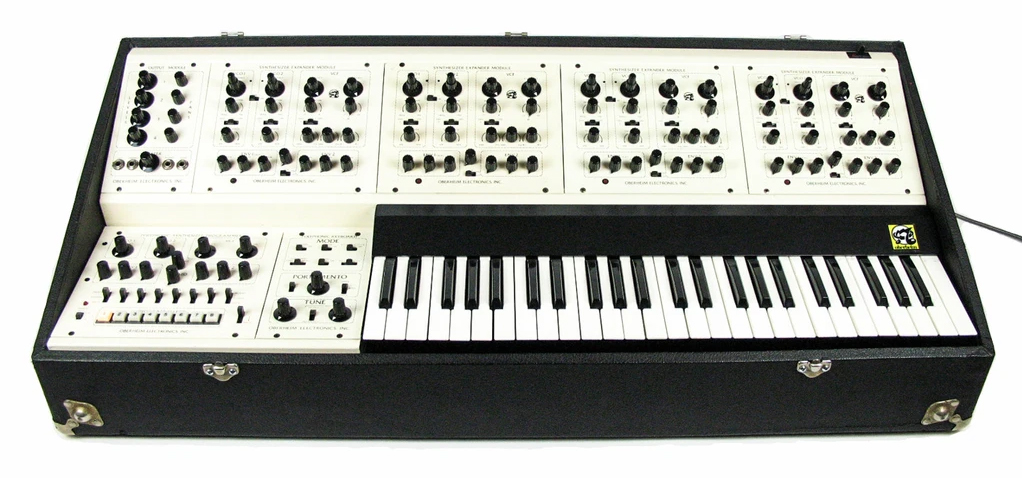Equipment
Liam Howlett’s synths and gear in studio and live.

Oberheim Four Voice
The Oberheim Four Voice FVS-1 polyphonic is an analog music synthesizer that was produced from 1975 to 1979 by Oberheim Electronics. It was developed by Tom Oberheim, and was the first production synthesizer capable of playing chords.
Oberheim took the idea and electronics of a Minimoog synthesizer and put them in a small box, making a few changes, and produced his SEM (synthesizer expansion module), the building block of his polyphonic synths. By strapping two, four, or eight of these SEMs together under keyboard control, he was able to create practical, albeit large, synthesizers that could play two, four, or eight notes simultaneously. Thus the Oberheim polyphonic was born. Each SEM in an Oberheim polyphonic defines one voice (or note) being played in a chord. In addition to multiple voices, on an Oberheim polyphonic you could save settings for sounds you created with a preset programmer (four and eight voice models) and you could glide from one note or chord to another using portamento.
The Oberheim polyphonic was later outdated by a new line of Oberheim synthesizers and Sequential Circuits synths that used more integrated circuits and also some digital embedded microprocessor control; these were less heavy and much smaller than the Oberheim polyphonic. Despite their maintenance cost and rarity, Oberheim polyphonic synthesizers are still adored by many musicians today for their unparalled sonic 'thickness' and 'depth' caused in part by the random variance between each SEM module.
If you know something else about this piece of gear, please mail to me or contact me via feedback form.
The Prodigy 34 pcs sticker set
Big set of The Prodigy stickers. 17 different designs (2 of each) and total of 30 stickers. Sticker sizes vary from 9 cm to 3,5 cm. Order here >


